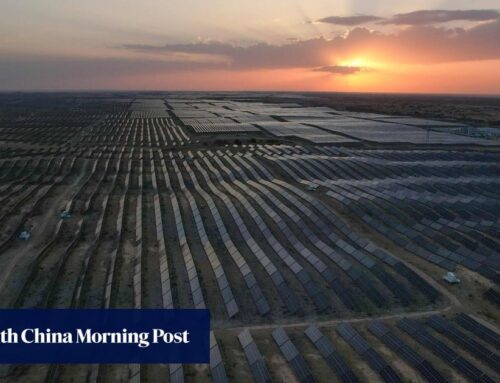Tribune Editorial: Utah should get with the sustainable energy program
April 27, 2025
A stubborn and unthinking devotion to using fossil fuels to power Utah’s energy future can only lead to our state’s economy becoming as dry and dead as all those dinosaur bones.
The future is renewable energy. The technology is advancing. The costs are declining. Even oil-centric states such as Texas are loading up on the solar and wind infrastructure, as Utah — almost deliberately, it seems — is being left behind.
Legislative interference in plans by private industry and energy-producing co-ops, pushing back on moves to renewable energy and clinging to dirty and ever-more-expensive coal, have hobbled what should be Utah’s opportunity to lead the way on moving to clean and abundant energy.
There is reason to be hopeful that innovation and market forces have already begun an inexorable march toward renewables such as wind, solar, geothermal and new nuclear technology, supported by ever-more-efficient batteries and other forms of energy storage.
The share of Utah’s energy that comes from coal has already plummeted from 75% in 2015 to 46% in 2023, according to the U.S. Energy Administration. Of all the energy capacity added in our state since 2015, 93% of it is from solar.
Nationally, coal is already down to 15% of our power production, while solar and wind together outpaced coal in 2024, for the first time ever, at 17%.
Advocates at Utah Clean Energy figure that from 2007 to 2023, sustainable energy growth in the state brought $4.1 billion in construction and investment, $24.6 million in property tax revenue and $6.3 million in lease payments to farmers and other landowners.
Much of the short-term promise going forward comes from the grants, tax breaks and requirements that were part of the 2022 Inflation Reduction Act. That’s an act of Congress that might better have been called the Increasing Energy Act, given how much of that bill’s focus was on clean and sustainable energy projects.
The Trump administration, eager to reduce spending on useful things so it can cut taxes for the rich, is threatening to end IRA funding. That would be a bad idea, and Utah’s all-Republican congressional delegation should oppose such backward steps.
Calculations from groups including the Energy Innovation think tank in California to the Wilkes Center for Climate Science and Policy at the University of Utah show that IRA incentives to new renewable energy projects stand to boost Utah’s gross domestic product significantly over the next decade.
Those numbers also show that removing IRA grants and incentives threaten to cost the state jobs even as it increases our energy costs. Or, perhaps more properly, cost the state jobs because it increases our energy costs.
The case for Utah’s move to sustainable energy is so strong that it isn’t necessary to raise the specter of, you should excuse the expression, climate change. The plummeting cost of solar energy infrastructure and the market’s overall move away from coal — far beyond Utah’s poor power to add or detract — are reason enough.
Editorials represent the opinions of The Salt Lake Tribune editorial board, which operates independently from the newsroom.
Search
RECENT PRESS RELEASES
Related Post




